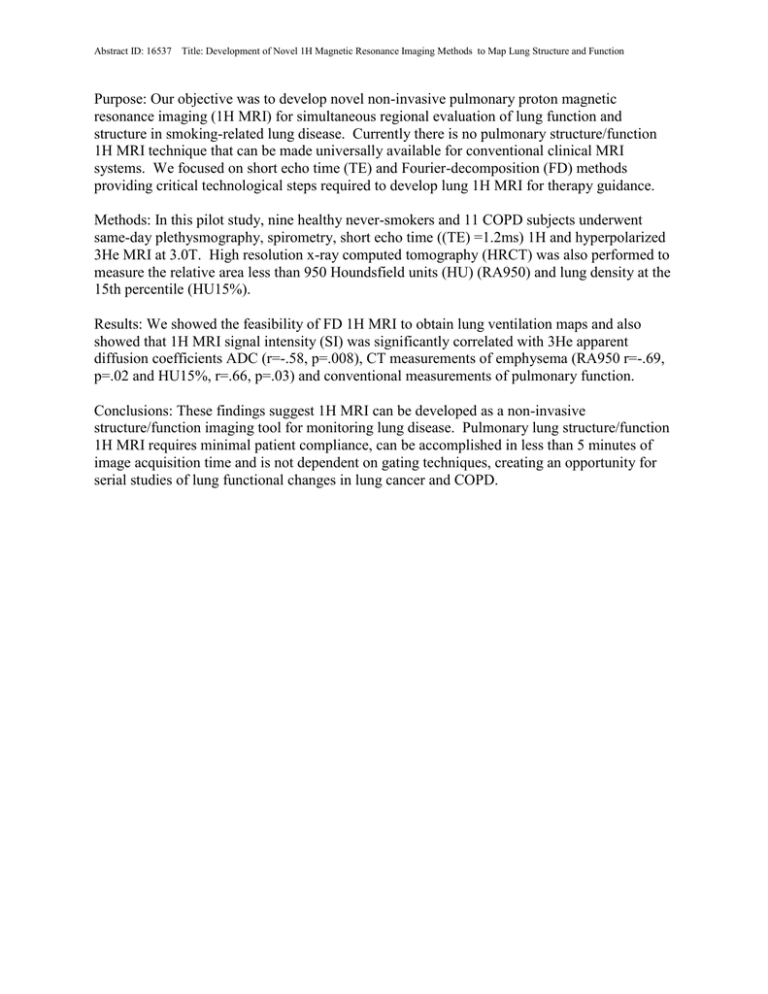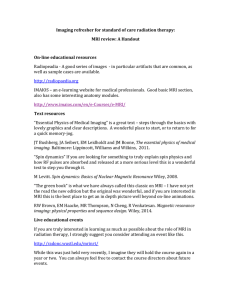Document 14388312
advertisement

Abstract ID: 16537 Title: Development of Novel 1H Magnetic Resonance Imaging Methods to Map Lung Structure and Function Purpose: Our objective was to develop novel non-invasive pulmonary proton magnetic resonance imaging (1H MRI) for simultaneous regional evaluation of lung function and structure in smoking-related lung disease. Currently there is no pulmonary structure/function 1H MRI technique that can be made universally available for conventional clinical MRI systems. We focused on short echo time (TE) and Fourier-decomposition (FD) methods providing critical technological steps required to develop lung 1H MRI for therapy guidance. Methods: In this pilot study, nine healthy never-smokers and 11 COPD subjects underwent same-day plethysmography, spirometry, short echo time ((TE) =1.2ms) 1H and hyperpolarized 3He MRI at 3.0T. High resolution x-ray computed tomography (HRCT) was also performed to measure the relative area less than 950 Houndsfield units (HU) (RA950) and lung density at the 15th percentile (HU15%). Results: We showed the feasibility of FD 1H MRI to obtain lung ventilation maps and also showed that 1H MRI signal intensity (SI) was significantly correlated with 3He apparent diffusion coefficients ADC (r=-.58, p=.008), CT measurements of emphysema (RA950 r=-.69, p=.02 and HU15%, r=.66, p=.03) and conventional measurements of pulmonary function. Conclusions: These findings suggest 1H MRI can be developed as a non-invasive structure/function imaging tool for monitoring lung disease. Pulmonary lung structure/function 1H MRI requires minimal patient compliance, can be accomplished in less than 5 minutes of image acquisition time and is not dependent on gating techniques, creating an opportunity for serial studies of lung functional changes in lung cancer and COPD.






